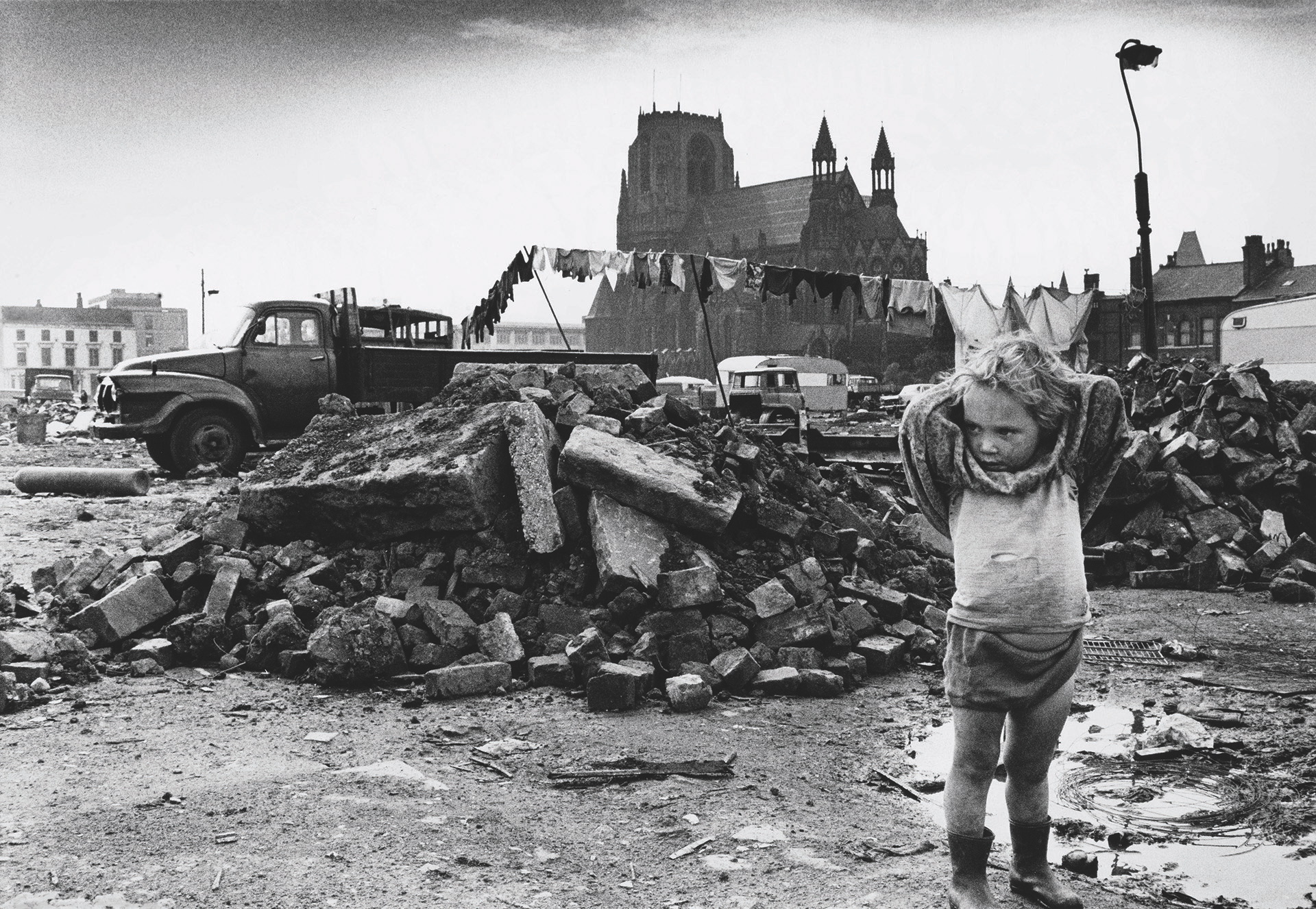Preview:
Shirley Baker
Salford photographer Shirley Baker documented life before the post-war slum clearances that changed Manchester communities irrevocably
When photographer Shirley Baker died in 2014 she was hailed as an artist who chronicled a period of vast change in post-war Manchester. Throughout the 1950s and 1960s Baker sought to record the slump that affected northern towns as communities were moved from their terraced homes to tower blocks, and as Baker photographed women chatting in the street and children fashioning toys from pieces of string, she was acutely aware that she was documenting a vanishing world.
Many believe Britain’s towns have never been able to regain the sense of community that was lost after 1.3 million homes were demolished in the two decades after 1955.
Baker walked the streets destined for demolition in Hulme and Salford, capturing ordinary moments in ordinary lives. And during a career spanning more than 50 years she took thousands of images covering a range of themes, but despite her relentless effort to document the world around her, she was relatively unknown until after her death.
Anna Douglas, who is curating an exhibition that showcases Baker’s work from 1961 to 1981, believes one of the reasons Baker remained unnoticed was down to her gender.
“Photography historians had never heard of Shirley, and I thought this was a real travesty because you’ve got a woman who had been photographing for over 50 years in the post-war period in Britain, when photography really took off. Here’s a woman who devoted her life to photographing incredibly high quality work, socially, pictorially and technically, and nobody knew her,” says Douglas. “I think a lot of it is to do with her being a woman – I would say that very confidently.”
Shirley Baker: Women and Children; and Loitering Men features a collection of Baker’s work focusing on the theme of working-class women and their relationships. The exhibition includes 156 of Baker’s images, and Douglas has worked with members of the public to record their personal memories of the neighbourhoods Baker photographed.
“I think what you see in her work is a real interest in human relationships,” says Douglas, adding: “She’s also focusing on the relationships between children when they are playing, the relationships women have with each other. This comes across very strongly in the street, and also relationships women have with children.”
Bridget Cunliffe was photographed by Baker outside her home on Honduras Street, Chorlton-on-Medlock, in 1965. Then aged five, Cunliffe is seen sitting on the floor with her three sisters Mary, Sarah and Kate and another girl. The four siblings were known as “the red headed Murray girls”.
Cunliffe says: “We are delighted that Shirley is getting some recognition. She captured people in such a natural way. It is quite emotional going back and seeing the photographs. We had so much freedom in those days. We all looked out for each other. We called the neighbours ‘grannies’. It changed quite rapidly as everyone moved out of those streets.”
Shirley Baker: Women and Children; and Loitering Men is at Manchester Art Gallery until 28 August. Anna Douglas has curated a second exhibition of Baker’s work at Grundy Art Gallery, Blackpool. Shirley Baker: On the Beach runs until 19 August

Leave a reply
Your email address will not be published.